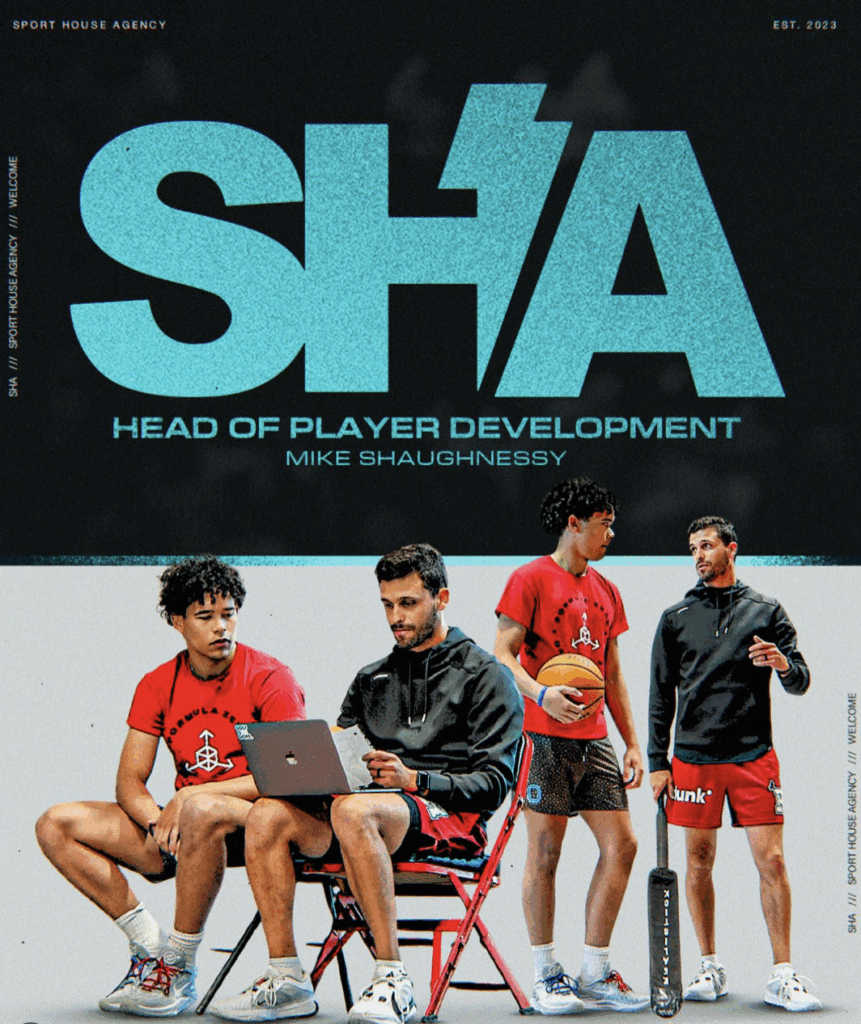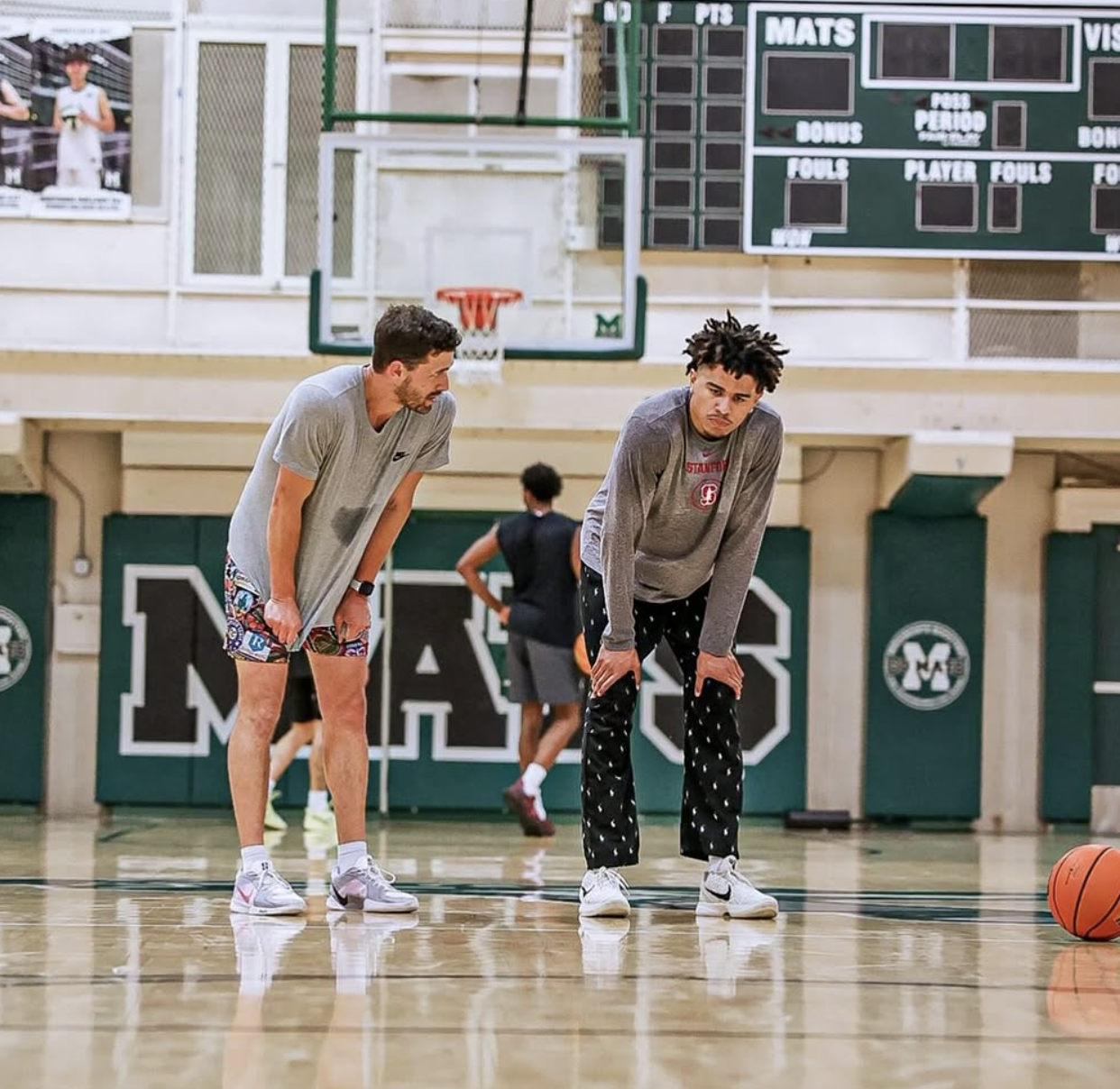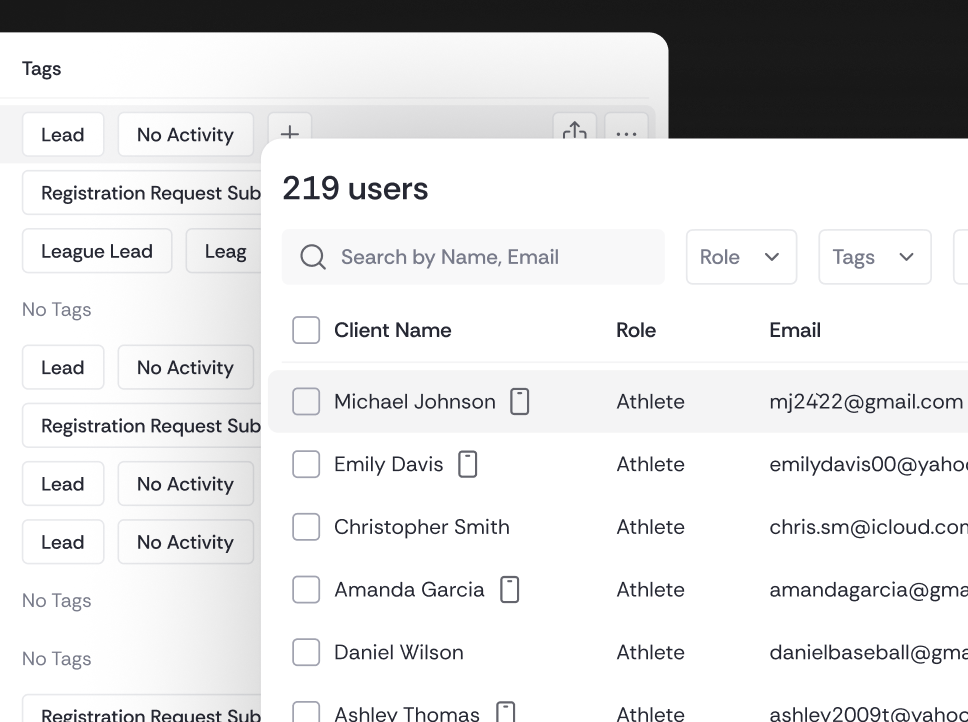Coaching business automation makes it possible for coaches like Mike Shaughnessy to work in three roles simultaneously—high school, AAU, and private training— without drowning in administrative chaos.
As a high school basketball coach, AAU coach, and private trainer, Mike sees how players develop (or struggle) across every environment. That perspective shaped his training philosophy and gave him a reality-check moment early in his career that changed everything.
In this episode of the CoachIQ Podcast, Mike breaks down his evolution from social media-driven “flash training” to evidence-based skill development, what parents should actually look for in AAU programs, and why the biggest threat to young athletes isn’t bad coaching—it’s burnout.
In this episode
- Why Mike abandoned trendy training methods after coaches gave him a reality check
- The training philosophy shift: from blocked practice to variability and decision-making
- What parents should prioritize when choosing AAU programs (hint: it’s not the circuit)
- Red flags in coaching programs that lead to poor player development
- How to prevent player burnout in year-round basketball culture
- The missing piece in American player development compared to European models

Why coaching business automation matters for multi-role coaches
Before diving into Mike’s story, it’s worth understanding why someone juggling three coaching roles needs systems in place. When you’re managing high school practice schedules, AAU tournament travel, and individual training clients, you’re coordinating hundreds of moving pieces every week.
Without automation, coaches spend 10+ hours per month just on scheduling logistics, payment follow-ups, and client communication. That’s time away from actual coaching, game planning, and player development. At $80-100 per session, those 10 hours represent $800-1,000 in lost billable time every month—or 50+ hours per year you could spend coaching instead of texting parents about schedules. Flexible pricing options for coaching software make automation accessible whether you’re training 15 clients or 150.
Mike’s ability to stay effective across all three roles depends on having systems that handle the administrative chaos—which is exactly what coaching business automation provides.
From flash to fundamentals: How coaching business automation changed Mike’s training evolution
When Mike started in player development over 10 years ago, he followed the playbook every new trainer follows: post flashy content on social media, use lots of cones and props, chase trends.
Then he went to a basketball camp where high school and college coaches watched him work. Their feedback was direct: “If you want to coach at a high level or earn respect as a player development coach, you need your own philosophy. What you’re doing right now—no coach would send their players to you.”
That reality check in 2013-2014 changed his trajectory. Mike stopped worrying about likes and followers. He started coaching—middle school, girls’ JV, then five years of Division III basketball. Those coaching experiences taught him what actually mattered for player success on the floor.
Today, Mike’s training philosophy centers on variability and decision-making rather than blocked, repetitive drills. Even during the season, his workouts emphasize random repetitions and game-like scenarios over robotic skill work. The only exception: when he’s building specific footwork patterns that need isolated repetition before adding complexity.
“The game is about players making plays and decisions,” Mike explains. “If you’re going to practice twice a week and play tournaments, you need to work on that stuff in practice—then test it in games. That’s how you get better.”
Mike’s journey from trend-chasing to philosophy-driven training shows what every coach eventually learns: copying what works on Instagram doesn’t build a real training business. You need your own methodology. Tools like client management systems help coaches track which training approaches actually produce results with different athletes over time. Performance analytics and progress tracking features show you which drills translate to game improvement, which athletes are plateauing, and where to adjust your methodology—letting data inform philosophy rather than social media trends.

The chaos principle: using length and unpredictability in training
Mike’s training sessions look different from most Instagram workout videos. He uses a realistic—an extended-length blocking pad—to create chaos during finishing drills and ball-handling work.
At 6’2″, Mike can’t physically replicate the 7-foot length his higher-level players face in games. The realistic solves that problem while forcing athletes to handle unpredictable pressure, protect the ball through contact, and finish through length they wouldn’t see in controlled drills.
“Whether it’s my high school kids or higher-level guys, they’re excited about the challenge,” Mike says. “You might get blocked three times in a row, but you want to get back up and try to dunk on me or finish strong. That competitiveness is underrated in training.”
The principle extends beyond equipment. Mike’s workouts incorporate decision-making, defensive pressure, and variable repetitions that better mirror actual game situations. His higher-level players particularly value this approach—their college programs often rely heavily on blocked practice with cones, so working with Mike provides the competitive, unpredictable training they need to translate skills to games. This personalized approach scales when coaches use coaching business automation to track each athlete’s progress and training history.
For coaches managing multiple training groups with different skill levels, keeping athletes engaged between sessions matters just as much as the workouts themselves. A branded mobile app for your coaching business lets you share drill videos, training progressions, and session recaps—keeping that competitive energy alive even when athletes aren’t in the gym.
What parents actually need to know about AAU basketball
Mike’s position across high school, AAU, and private training gives him a unique view of what works—and what doesn’t—in the AAU landscape.
His advice to parents and players evaluating AAU programs always comes back to four priorities: good coaching, consistent development, playing time, and fit with the player’s role.
“Everyone wants to play for the Adidas circuit, Nike EYBL, or Puma circuit,” Mike explains. “Parents and kids love those labels. But if you’re playing 5-10 minutes and not in the same role you have in high school, what’s the point? You’re not getting seen, and you’re not getting better.”
The playing time calculation matters more than parents realize. College coaches increasingly recruit older players through the transfer portal and junior colleges. For younger players to get recruited, they need significant minutes to showcase their actual role and ability—not garbage-time appearances on a stacked roster. This mirrors the economics coaches face when deciding between individual sessions versus group training—both require strategic thinking about maximizing value and development time.
Beyond playing time, Mike emphasizes finding programs that practice regularly. The off-season is the most important time for skill development, but many circuit teams only play tournaments without structured practice. Programs that practice twice a week and then apply that work in tournaments create the development loop players need.
For coaches managing AAU programs or private training schedules, automated scheduling systems eliminate the chaos of coordinating practice facilities, tournament travel, and individual training sessions—giving coaches more time to focus on actual player development rather than logistics.
The red flags parents should watch for
When parents ask Mike about evaluating programs, he focuses on accountability and organization as the two biggest indicators of quality.
Accountability doesn’t mean a coach yelling in players’ faces. It means holding athletes to the intangibles: rotating on defense, boxing out, communicating, showing multiple effort. Programs that don’t hold players accountable to these fundamentals aren’t preparing them for higher levels of basketball—or for life.
“If you’re not rotating and getting both feet outside the lane line, if you’re not boxing out, if you’re not talking—the coach should let you know or sub you out,” Mike says. “Those things lead to success in basketball and in life.”
Organization matters more than parents realize. Programs that can’t provide schedules until two days before tournaments, bounce between different practice facilities without consistency, or fail to communicate clearly about costs create stress for families and inconsistency for players.
Mike recommends parents look for programs that provide upfront information: spring and summer tournament schedules, practice locations and frequency, total costs broken down by season, and clear communication channels. Automated payment processing solves the financial transparency piece while reducing administrative chaos—no more confusion about who paid, who owes, or what the actual costs are.
The business side matters because disorganization bleeds into the basketball side. If a program can’t handle basic scheduling and payment logistics, they probably aren’t organized enough to run quality practices either.
For coaching businesses trying to scale—whether you’re opening your own training facility or managing multiple teams and programs—communication tools that automate updates and maintain consistent contact with parents solve many of these organizational pain points while reducing the administrative burden that takes time away from coaching.
The consistency gap: Why coaching business automation matters more than ever
One conversation particularly stuck with Mike. A coach from overseas explained how European player development differs fundamentally from the American model: consistency.
In Europe, a 14-year-old joins a club program and receives the same coaching philosophy, training methodology, and developmental messaging through ages 15, 16, and 17. The consistency creates a foundation that compounds over time.
In America, players bounce between programs constantly. A player might have a good high school coach—or might not. They might train with one person at 15, a different trainer at 16, and switch AAU programs twice in a single spring and summer. Every coach uses different terminology, different systems, different philosophies.
“There’s just no consistency,” Mike observes. “The messages are different, the coaching style is different. I don’t know what that model looks like here, but we desperately need it for our players to get better and for the experience to be a lot better.”
The consistency challenge extends beyond player development to business operations. Coaches managing clients across multiple age groups, skill levels, and programs need systems that maintain quality without requiring them to manually track every detail. This is the exact challenge coaches like Tyler Leclerc faced when scaling from one facility to two—without automated systems for client tracking, session notes, and developmental progressions, maintaining coaching quality becomes impossible as you scale.

Preventing burnout in year-round basketball culture
Mike’s most passionate advice centers on a problem many coaches hesitate to address: burnout.
“Kids and sometimes parents get caught up in training every day, going from one trainer to another, then practice, then another gym in the evening,” Mike explains. “I’ve seen too many kids where the parents are sending them from trainer to trainer. I just don’t think that’s sustainable for having love and joy for the game.”
His recommendation is simple but often ignored: give players time off. Two weeks after high school season ends. The month of August between AAU and high school open gyms. Time to be a kid, focus on school, hang with friends, and get away from basketball.
The physical and mental recovery serves two purposes. First, it prevents burnout that kills passion for the game. Second, it creates renewed motivation—players come back to training refreshed and excited rather than exhausted and resentful.
“The moment you take two weeks off and you know you’re going to start up again, you’re going to be that much more motivated,” Mike says. “You’ll feel refreshed physically and mentally.”
This advice applies to coaches too. Mike reminds himself that he needs time away from basketball to be with his family and maintain his own passion for coaching. The work will always be there. The joy won’t if you don’t protect it.
The bottom line
Mike Shaughnessy’s multi-faceted perspective as a high school coach, AAU coach, and private trainer reveals what actually matters in player development: evidence-based training methodology, the right program fit over prestigious circuits, accountability to intangibles, organizational consistency, and protecting players from burnout.
For parents navigating the complex basketball landscape, Mike’s advice simplifies the decision-making: find programs with good coaching that practice regularly, where your athlete will play meaningful minutes in their natural role, and that hold players accountable while staying organized.
For coaches building training businesses across multiple roles and responsibilities, Mike’s approach demonstrates why coaching business automation matters. Managing high school practices, AAU tournaments, and private training sessions means you’re juggling three different schedules, payment systems, and client databases—exactly the problems coaching business automation solves.
Ready to see how it works? Explore CoachIQ’s features and spend more time developing players, less time managing logistics.


